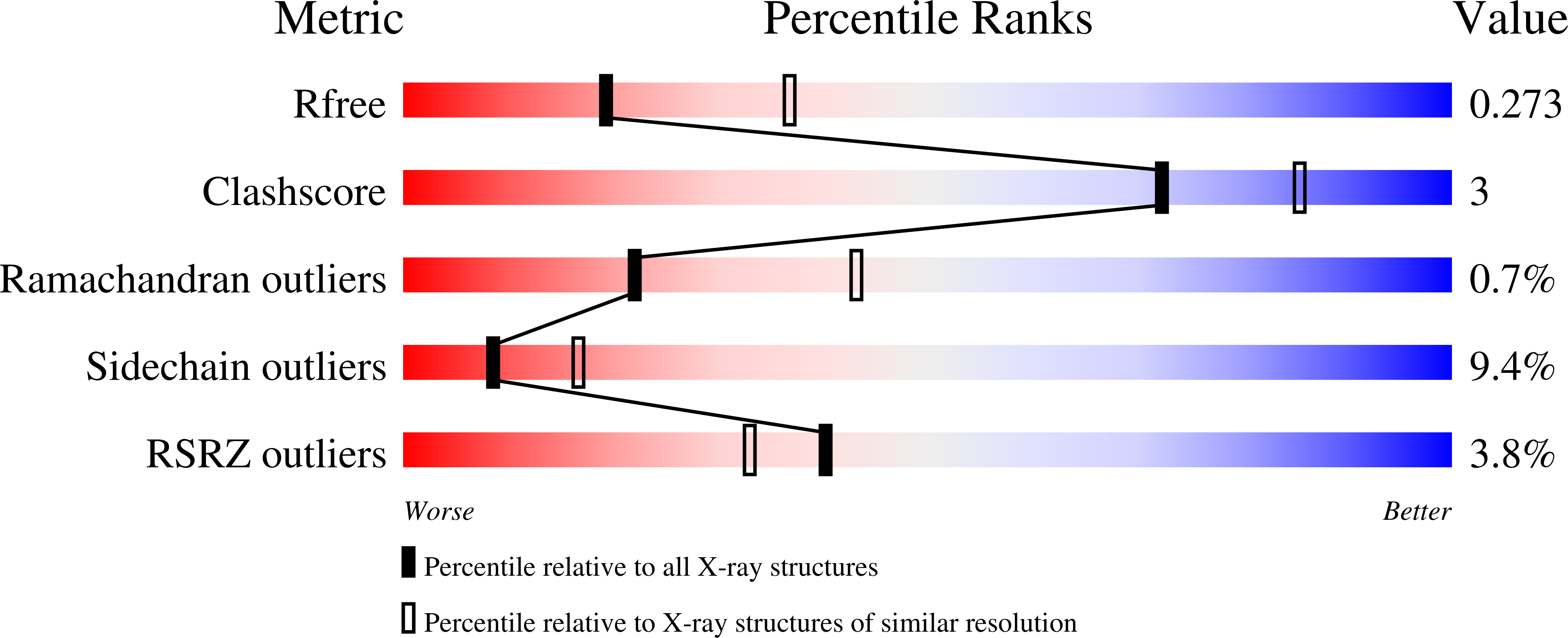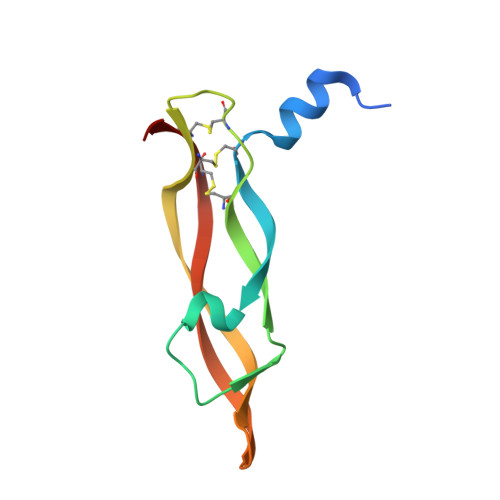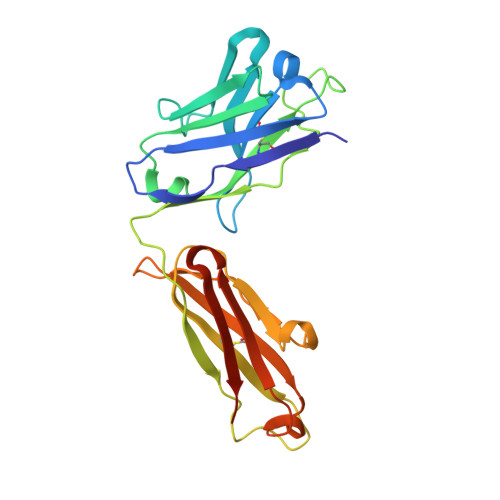Synthetic antibodies from a four-amino-acid code: A dominant role for tyrosine in antigen recognition
Fellouse, F.A., Wiesmann, C., Sidhu, S.S.(2004) Proc Natl Acad Sci U S A 101: 12467-12472
- PubMed: 15306681
- DOI: https://doi.org/10.1073/pnas.0401786101
- Primary Citation of Related Structures:
1TZH, 1TZI - PubMed Abstract:
Antigen-binding fragments (Fabs) with synthetic antigen-binding sites were isolated from phage-displayed libraries with restricted complementarity-determining region (CDR) diversity. Libraries were constructed such that solvent-accessible CDR positions were randomized with a degenerate codon that encoded for only four amino acids (tyrosine, alanine, aspartate, and serine). Nonetheless, high-affinity Fabs (K(d) = 2-10 nM) were isolated against human vascular endothelial growth factor (hVEGF), and the crystal structures were determined for two distinct Fab-hVEGF complexes. The structures revealed that antigen recognition was mediated primarily by tyrosine side chains, which accounted for 71% of the Fab surface area that became buried upon binding to hVEGF. In contrast, aspartate residues within the CDRs were almost entirely excluded from the binding interface. Alanine and serine residues did not make many direct contacts with antigen, but they allowed for space and conformational flexibility and thus played an auxiliary role in facilitating productive contacts between tyrosine and antigen. Tyrosine side chains were capable of mediating most of the contacts necessary for high-affinity antigen recognition, and, thus, it seems likely that the overabundance of tyrosine in natural antigen-binding sites is a consequence of the side chain being particularly well suited for making productive contacts with antigen. The findings shed light on the basic principles governing the evolution of natural immune repertoires and should also aid the development of improved synthetic antibody libraries.
Organizational Affiliation:
Department of Protein Engineering, Genentech Inc., 1 DNA Way, South San Francisco, CA 94080, USA.
















